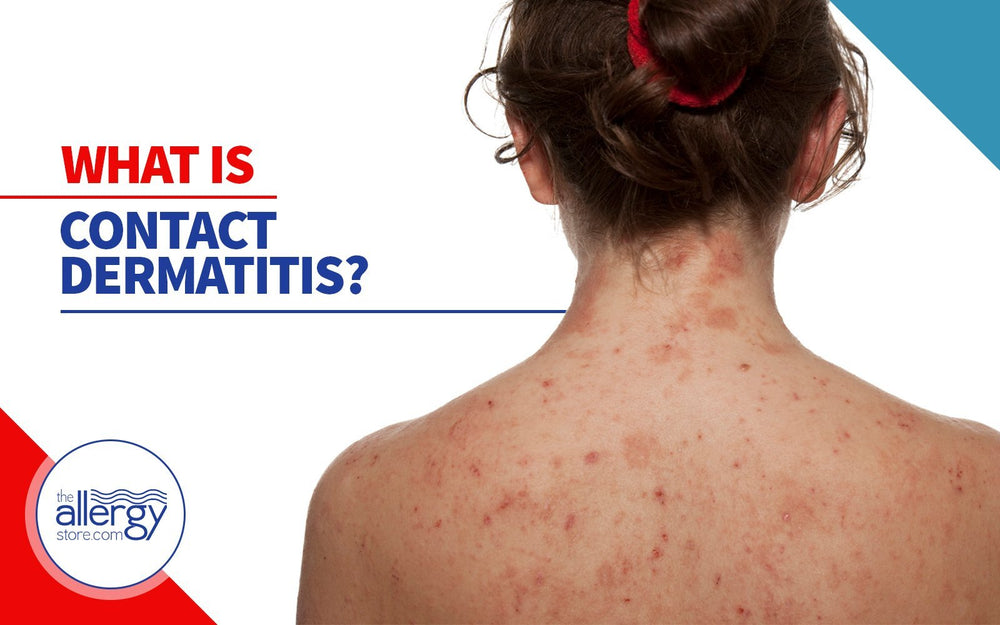
Contact dermatitis is the second most common dermatological diagnosis. A survey of medical professionals in 1995 found that contact dermatitis resulted in almost 8.4 million outpatient visits to medical facilities.
Contact dermatitis is different from the contact urticaria described in our article " What are Hives". With contact dermatitis, the resulting skin condition can last for days or weeks and will continue as long as the skin continues to be exposed to the irritant. The rash is localized, and only involves the upper layers of the skin, and is the result of direct contact with an irritating substance.
Contact dermatitis can appear as a red rash. Blisters or pustules may or may not be present. If blisters are present, they may weep and ooze before crusting over. Intense itching or burning or even pain may be present. Sometimes the skin actually will feel warm to the touch.
There are three major types of contact dermatitis: irritant, allergic, and photosensitive.
Irritant Contact Dermatitis
As suggested by the name, irritant contact dermatitis occurs when a substance that causes irritation is exposed to the skin. In this type of contact dermatitis, the skin is actually injured. Common irritants are strong acid or alkaline substances, chemicals such as sodium laurel sulfate (common in soaps and shampoos), latex, cleaners and solvents. The hands are the most common site of irritant contact dermatitis.
Allergic Contact Dermatitis
With this type of contact dermatitis, the immune system is involved and a true allergic reaction occurs. One of the most common causes of allergic contact dermatitis is the urushiol oil in the Toxicodendron family of plants. This plant family includes poison ivy, poison oak, and poison sumac.
Metals such as nickel are also common allergens. In the past the most common suspects were usually cheap costume jewelry and jewelry inserted into piercings as well as belt buckles, bra straps and button on pants. Now it appears your cell phone could be a suspect as well, causing flareups of allergic contact dermatitis (ACD).
Clothing can also be a source of allergic contact dermatitis. The chemicals used in the permanent press process and used to tan leather can be a source of allergens.
Many of the fragrances and masking fragrances used in personal care items also cause allergies. If the fragrance is not the cause, it could be the preservatives used. Quaternium-15 is a widely used preservative as it is a formaldehyde releaser and is frequently the culprit in allergic contact dermatitis.
PhotoSensitive Contact Dermatitis
This contact dermatitis occurs when a combination of ultraviolet light and a sensitizing agent causes a rash or blisters. This is also known as sun poisoning or photoallergy. A subset of this condition is phytophotodermatitis. In this condition when the skin is exposed to the sap of certain plants in conjunction with ultraviolet light blistering occurs.
Carrots, rue, and fig are some of the plants that can cause this rare condition. This is not to be confused with photosensitive allergic dermatitis that is caused purely by exposure to ultraviolet light and does not require contact with any substance.
Treatment of mild contact dermatitis can be done at home. More serious or chronic symptoms should be addressed by a medical professional. The most important treatment is washing with plenty of water. This should be the first action you take in an effort to remove as much of the irritating substance as possible. In the case of contact with metal, remove the metal. If the cause is exposure to a strong alkaline substance, you can rinse with lemon juice or vinegar to reduce the alkalinity.
If blisters are present, use cool compresses several times a day. Soaking in oatmeal baths and the application of calamine lotion can relieve itching.
Anti-Itch creams such as Vanicream™ HC 1% Hydrocortisone can also bring relief. If the contact dermatitis is caused by an allergic reaction oral antihistamines will help. Antihistamines will not help with an irritant or photosensitive contact dermatitis.
If you have a chronic rash and are not sure of the cause, your doctor can perform allergy testing to determine if allergies are the root of your problem. Your doctor can also help you determine if the cause is irritant or allergic in nature.
Regardless of the cause, if you have a rash that persists you should seek medical attention.
Wishing you the best of health
The Allergy Store
Allergy elimination is about eliminating the allergy-causing substance in your home the best you can. Once you do this, you may be able to eliminate the need for all the medications and doctor visits. For additional information please click here to download your free copy of" You Can Do It! Allergy Free Living.

